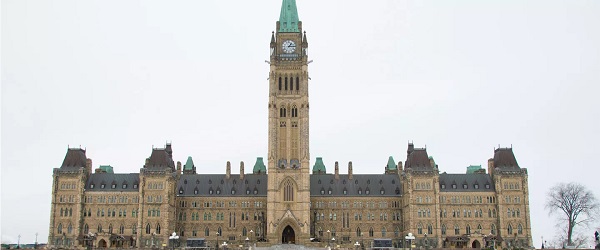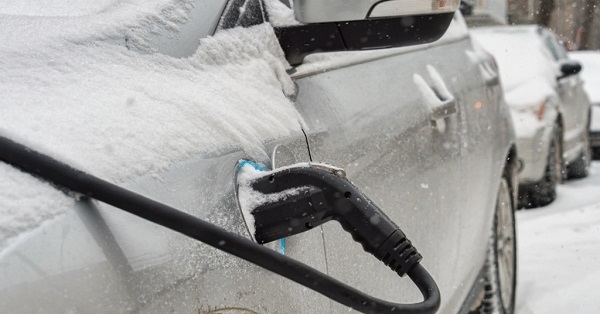Business
The Strange Case of the Disappearing Public Accounts Report

A few days ago, Public Services and Procurement Canada tabled their audited consolidated financial statements of the Government of Canada for 2024. This is the official and complete report on the state of government finances. When I say “complete”, I mean the report’s half million words stretch across three volumes and total more than 1,300 pages.
Together, these volumes provide the most comprehensive and authoritative view of the federal government’s financial management and accountability for the fiscal year ending March 31, 2024. The tragedy is that no one has the time and energy needed to read and properly understand all that data. But the report identifies problems serious enough to deserve the attention of all Canadians – and especially policy makers.
The Audit is a reader-supported publication. To receive new posts and support my work, consider becoming a free or paid subscriber.
Following the approach of my Parliamentary Briefings series, I uploaded all three volumes of the report to my AI research assistant and asked for its thoughts. Each one of the observations that came out the other end is significant and, in calmer and more rational times, could easily have driven a week’s worth of news coverage. But given the craziness of the past few weeks and months, they’re being largely ignored.
With that in mind, I’ve made this special edition of the Parliamentary Briefings series fully accessible to all subscribers.
We begin with a summary of the purpose and scope of the three uploaded volumes of the Public Accounts of Canada for 2023–2024:
Volume I: Summary Report and Consolidated Financial Statements
- Purpose: Provides a high-level overview of the federal government’s financial performance, presenting the consolidated financial statements audited by the Auditor General. It serves as the primary accountability report.
- Scope:
- Audited financial statements.
- Analysis of revenues, expenses, and the accumulated deficit.
- Overview of assets, liabilities, and financial position.
- Discussion of economic context, risks, uncertainties, and ten-year comparative financial data.
Volume II: Details of Expenses and Revenues
- Purpose: Presents the financial operations of the government, broken down by ministries and agencies, for detailed accountability.
- Scope:
- Financial transactions segregated by ministry.
- Details of appropriations, revenues, and transfer payments.
- Summary tables on ministerial expenditures by type, object, and other dimensions.
- Appendices providing additional details on budgetary authorities and their sources.
Volume III: Additional Information and Analyses
- Purpose: Offers supplementary analyses and financial data beyond what is included in the first two volumes, focusing on revolving funds, professional services, and shared-cost programs.
- Scope:
- Financial statements of revolving funds (e.g., Passport Canada, Canadian Grain Commission).
- Expenditure details on acquisitions, transfer payments, and public debt charges.
- Analyses of federal-provincial shared-cost programs and claims against the Crown.
- Miscellaneous financial and operational data for broader transparency.
The Audit: Based on these documents, could you identify the most serious threats to Canada’s economic stability?
From the Public Accounts of Canada 2023–2024, several serious threats to Canada’s economic security can be identified. These threats emerge from the broader fiscal and economic analyses, contingent liabilities, and uncertainties highlighted in the documents.
1. Growing Public Debt and Debt Servicing Costs
- Observation: Canada’s public debt charges increased significantly in 2024, rising by 35.2% year-over-year, largely due to higher interest rates on debt. The total accumulated federal debt stood at $1.24 trillion, representing 42.1% of GDP, up from 41.1% the previous year.
- Risk: Rising debt servicing costs reduce fiscal space for critical public investments, making the economy vulnerable to future economic shocks or downturns.
2. Contingent Liabilities and Indigenous Claims
- Observation: The government recorded $16.4 billion in contingent liabilities related to Indigenous claims in 2024, reflecting ongoing efforts to address past injustices. These liabilities have been increasing at an average annual growth rate of 30% since 2016.
- Risk: The unpredictable nature and scale of these liabilities could create significant financial pressures if settlements or court decisions require substantial payouts.
3. Legacy Costs from the COVID-19 Pandemic
- Observation: The government recorded $4.7 billion in pandemic-related expenses for 2024, including write-offs for expired vaccines and provisions for unrecovered loans and benefits.
- Risk: These costs highlight vulnerabilities in emergency financial planning and expose the government to further financial risks if similar large-scale public health crises occur.
4. Economic Pressures from High Inflation and Interest Rates
- Observation: Inflation returned to the Bank of Canada’s 2% target by mid-2024 after 41 consecutive months above this threshold. However, elevated interest rates (peaking at 5%) contributed to a softening economy.
- Risk: Prolonged periods of high interest rates could suppress household and business spending, slowing economic growth and increasing the likelihood of a recession.
5. Climate Change and Environmental Commitments
- Observation: Significant spending is allocated to addressing climate change, with over $1 billion dedicated to environmental programs in 2024, including pollution pricing proceeds and clean energy initiatives.
- Risk: Canada’s reliance on resource-intensive industries and increasing costs to meet climate targets create economic vulnerabilities, particularly in regions heavily reliant on fossil fuels.
6. Global Economic Instability
- Observation: Global supply chain disruptions, energy price volatility, and geopolitical events (e.g., Russia’s invasion of Ukraine) significantly impacted Canada’s economy, with slower GDP growth (1.5% in 2023) and reduced trade.
- Risk: External shocks could exacerbate domestic economic challenges, such as rising import costs or reduced demand for Canadian exports.
7. Labor Market and Productivity Challenges
- Observation: While job creation remained positive, population growth outpaced employment gains, leading to an increase in the unemployment rate to 6.5% by October 2024. Productivity improvements have been uneven.
- Risk: Labor shortages in key sectors and declining workforce participation among certain demographics (e.g., aging population) could undermine economic resilience.
8. Dependence on Resource Revenues
- Observation: Volatile global commodity prices impacted nominal GDP growth, with gains slowing to 2.9% in 2023 after double-digit growth in prior years.
- Risk: Fluctuations in resource revenues leave Canada exposed to external shocks, particularly in provinces like Alberta and Saskatchewan, heavily reliant on oil and gas.
These challenges underscore the need for proactive fiscal and policy measures to safeguard economic stability, manage liabilities, and address emerging risks.
The Audit: What would you recommend as the three most urgent areas to address to avoid deepening the economic crisis?
1. Manage Rising Public Debt and Debt Servicing Costs
- Why It’s Urgent: The rapid increase in public debt charges (35.2% in 2024) is crowding out fiscal space for essential programs. The federal debt, at 42.1% of GDP, has become a significant liability, with interest rate fluctuations posing an ongoing threat.
- Recommendations:
- Introduce stricter fiscal discipline by prioritizing expenditures that yield long-term economic benefits (e.g., infrastructure, innovation).
- Develop a comprehensive debt reduction strategy to stabilize the debt-to-GDP ratio in the medium term.
- Explore debt refinancing strategies to lock in lower interest rates where feasible.
- Impact: Reducing debt servicing pressures will free up resources for critical investments and improve Canada’s fiscal resilience.
2. Mitigate the Economic Impact of Contingent Liabilities
- Why It’s Urgent: Contingent liabilities related to Indigenous claims have grown exponentially (30% annually since 2016), creating fiscal unpredictability and potentially overwhelming future budgets.
- Recommendations:
- Accelerate settlement negotiations to limit litigation costs and interest on outstanding claims.
- Establish a transparent reserve fund specifically for contingent liabilities, ensuring predictable future payouts.
- Increase collaboration with Indigenous communities to address systemic issues and prevent further claims.
- Impact: Resolving liabilities promptly will reduce fiscal uncertainty and demonstrate Canada’s commitment to reconciliation.
3. Address Structural Labor Market and Productivity Challenges
- Why It’s Urgent: Despite job creation, rising unemployment (6.5% in late 2024) and productivity stagnation threaten long-term economic growth. Labor shortages in critical sectors further exacerbate vulnerabilities.
- Recommendations:
- Expand skilled immigration programs to address labor shortages in healthcare, technology, and green industries.
- Increase investment in workforce retraining programs, particularly for sectors undergoing automation or transition due to climate policies.
- Promote workplace flexibility and childcare access to increase labor force participation, particularly among women and aging workers.
- Impact: Enhancing workforce productivity and participation will strengthen the economic foundation and support GDP growth.
Rationale for Prioritization
These areas represent the most immediate threats to economic security and fiscal stability. Addressing them proactively can reduce vulnerabilities and position Canada for sustainable growth.
The Audit: What are the most surprising and disturbing details in these documents?
1. Rapid Growth of Public Debt Charges
- Detail: Public debt charges increased by 35.2% year-over-year to $47.3 billion, representing one of the fastest-growing expense categories. This reflects a combination of higher interest rates and the significant size of Canada’s debt.
- Why Disturbing: Such a rapid increase in debt servicing costs could divert funds from essential public services and programs. It also signals limited fiscal flexibility in the event of future economic shocks.
2. Ballooning Contingent Liabilities
- Detail: The federal government recorded $16.4 billion in expenses for Indigenous contingent liabilities in 2024. This is part of an ongoing surge, with liabilities increasing by 30% annually since 2016.
- Why Disturbing: While reconciliation efforts are vital, the sheer scale and rapid growth of these liabilities are fiscally unsustainable without structural changes or dedicated funding mechanisms. The risk of further liabilities emerging adds to fiscal uncertainty.
3. Significant Write-offs and Provisions for Pandemic Programs
- Detail: The government wrote off $1.2 billion in expired COVID-19 vaccines and therapeutics and recorded $3.5 billion in provisions for unrecovered pandemic-era loans.
- Why Disturbing: These figures highlight inefficiencies in planning and administration during the pandemic response, leading to substantial financial losses. The scale of unrecovered funds also raises questions about accountability in the deployment of emergency programs.
4. Rising Unemployment Despite Job Creation
- Detail: While 475,000 jobs were created in 2023, the unemployment rate rose to 6.5% by late 2024 due to population growth outpacing employment gains.
- Why Surprising: Despite strong job creation, an inability to keep pace with population growth signals structural issues in labor force integration. This poses a risk to Canada’s economic competitiveness and social cohesion.
5. Declining Corporate Income Tax Revenues
- Detail: Corporate income tax revenues decreased by 0.7%, driven by reduced taxable income despite an overall increase in total revenues.
- Why Surprising: The decline in corporate tax revenues during a period of economic recovery raises concerns about potential tax avoidance, economic inequality, or over-reliance on other revenue streams, such as personal income taxes.
6. Substantial Environmental and Climate Spending
- Detail: Over $1 billion was allocated to environmental programs, including pollution pricing proceeds. However, the documents note Canada’s slow progress toward net-zero targets and risks to resource-dependent provinces.
- Why Disturbing: While necessary, this spending may be insufficient given the scale of the climate challenge. The mismatch between spending and measurable progress on climate goals risks long-term environmental and economic consequences.
7. Unanticipated Costs of Indigenous Reconciliation
- Detail: Beyond contingent liabilities, the government is facing unpredictable settlement costs due to increasing litigation and the complexity of claims. These have already exceeded $60 billion since 2016.
- Why Disturbing: The ongoing financial impact of these settlements reflects Canada’s historical neglect of Indigenous issues. Resolving these claims is essential, but the lack of predictability or dedicated funding highlights systemic shortcomings in reconciliation strategies.
8. Softened GDP Growth and Inflation Challenges
- Detail: Real GDP growth slowed to 1.5% in 2023, and inflation remained high throughout the year, only reaching the Bank of Canada’s 2% target by mid-2024.
- Why Disturbing: The prolonged inflationary period and sluggish growth signal a fragile recovery. These economic conditions could exacerbate income inequality and lead to further fiscal strain.
9. High Provisions for Unrecovered Loans
- Detail: Provisions of $3.5 billion were recorded for emergency loans provided during the pandemic. The government continues to face difficulties in recovering these funds.
- Why Disturbing: This provision raises serious questions about the efficiency of loan administration and the government’s ability to safeguard public funds during emergencies.
10. Heavy Dependence on Volatile Resource Revenues
- Detail: Nominal GDP growth slowed to 2.9% in 2023, largely due to easing commodity prices after a surge in 2022. Resource dependence remains a key economic vulnerability.
- Why Surprising: Despite global shifts toward renewable energy, Canada’s reliance on resource revenues remains high, posing long-term risks to economic diversification and stability.
Invite your friends and earn rewards
Business
What Do Loyalty Rewards Programs Cost Us?

You’ve certainly been asked (begged!) to join up for at least one loyalty “points” program – like PC Optimum, Aeroplan, or Hilton Honors – over the years. And the odds are that you’re currently signed up for at least one of them. In fact, the average person apparently belongs to at no less than 14 programs. Although, ironically, you’ll need to sign up to an online equivalent of a loyalty program to read the source for that number.
Well all that warm, fuzzy “belonging” comes with some serious down sides. Let’s see how much they might cost us.
To be sure, there’s real money involved here. Canadians redeem at least two billion dollars in program rewards each year, and payouts will often represent between one and ten percent of the original purchase value.
At the same time, it’s estimated that there could be tens of billions of unredeemed dollars due to expirations, shifting program terms, and simple neglect. So getting your goodies isn’t automatic.
The Audit is a reader-supported publication.
To receive new posts and support my work, consider becoming a free or paid subscriber.
Just why do consumer-facing corporations agree to give away so much money in the fist place?
As you probably already know, it’s about your data. Businesses are willing to pay cold, hard cash in exchange for detailed descriptions of your age, sex, ethnicity, wealth, location, employment status, hobbies, preferences, medical conditions, political leanings, and, of course, shopping habits.
Don’t believe it works? So then why, after all these years, are points programs still giving away billions of dollars?
Every time you participate in such a program, the data associated with that activity will be collected and aggregated along with everything else known about you. It’s more than likely that points-based data is being combined with everything connected to your mobile phone account, email addresses, credit cards, provincial health card, and – possibly – your Social Insurance number. The depth and accuracy of your digital profile improves daily.
What happens to all that data? A lot of it is shared with – or sold to – partners or affiliates for marketing purposes. Some of it is accidentally (or intentionally) leaked to organized criminal gangs driving call center-related scams. But it’s all about getting to know you better in ways that maximize someone’s profits.
One truly scary way this data is used involves surveillance pricing (also known as price discrimination) – particularly as it’s described in a recent post by Professor Sylvain Charlebois.
The idea is that retailers will use your digital profile to adjust the prices you pay at the cash register or when you’re shopping online. The more loyal you are as a customer, the more you’ll pay. That’s because regular (“loyal”) customers are already reliable revenue sources. Companies don’t need to spend anything to build a relationship with you. But they’re more than willing to give up a few percentage points to gain new friends.
I’m not talking about the kind of price discrimination that might lead to higher prices for sales in, say, urban locations to account for higher real estate and transportation costs. Those are just normal business decisions.
What Professor Charlebois described is two customers paying different prices for the same items in the same stores. In fact, a recent Consumer Reports experiment in the U.S. involving 437 shoppers in four cities found the practice to be quite common.
But the nasty bit here is that there’s growing evidence that retailers are using surveillance pricing in grocery stores for basic food items. Extrapolating from the Consumer Reports study, such pricing could be adding $1,200 annually to a typical family’s spending on basic groceries.
I’m not sure what the solution is. It’s way too late to “unenroll” from our loyalty accounts. And government intervention would probably just end up making things worse.
But perhaps getting the word out about what’s happening could spark justified mistrust in the big retailers. No retailer enjoys dealing with grumpy customers.
Be grumpy.
The Audit is a reader-supported publication.
To receive new posts and support my work, consider becoming a free or paid subscriber.
Business
Largest fraud in US history? Independent Journalist visits numerous daycare centres with no children, revealing massive scam

A young journalist has uncovered perhaps the largest fraud scheme in US history.
He certainly isn’t a polished reporter with many years of experience, but 23 year old independent journalist Nick Shirley seems to be getting the job done. Shirley has released an incredible video which appears to outline fraud after fraud after fraud in what appears to be a massive taxpayer funded scheme involving up to $9 Billion Dollars.
In one day of traveling around Minneapolis-St. Paul, Shirley appears to uncover over $100 million in fraudulent operations.
🚨 Here is the full 42 minutes of my crew and I exposing Minnesota fraud, this might be my most important work yet. We uncovered over $110,000,000 in ONE day. Like it and share it around like wildfire! Its time to hold these corrupt politicians and fraudsters accountable
We ALL… pic.twitter.com/E3Penx2o7a
— Nick shirley (@nickshirleyy) December 26, 2025
-

 Business1 day ago
Business1 day ago“Magnitude cannot be overstated”: Minnesota aid scam may reach $9 billion
-

 Haultain Research6 hours ago
Haultain Research6 hours agoSweden Fixed What Canada Won’t Even Name
-

 Business1 day ago
Business1 day agoLargest fraud in US history? Independent Journalist visits numerous daycare centres with no children, revealing massive scam
-

 Censorship Industrial Complex1 day ago
Censorship Industrial Complex1 day agoUS Under Secretary of State Slams UK and EU Over Online Speech Regulation, Announces Release of Files on Past Censorship Efforts
-

 Daily Caller2 days ago
Daily Caller2 days agoIs Ukraine Peace Deal Doomed Before Zelenskyy And Trump Even Meet At Mar-A-Lago?
-

 Business5 hours ago
Business5 hours agoWhat Do Loyalty Rewards Programs Cost Us?











